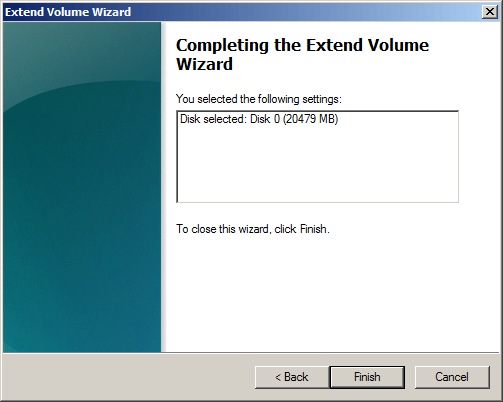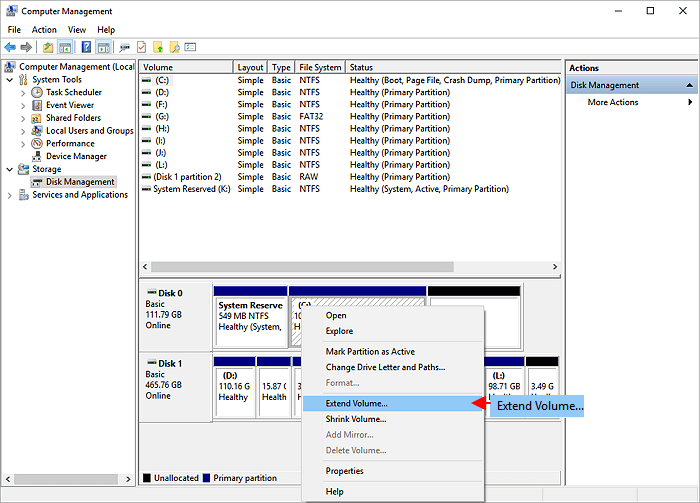


Finally, click "Next", and click "Finish" button. And then, put values on the "Select the amount of space in MB". After that, in the "Select Disk" dialog-box, select the dynamic disk you want to use and click "Add". In the Extend Volume Wizard, click "Next".Right-click a simple volume in the disk management, and then choose "Extend Volume".Taking Windows Server 2003 for example, you can follow the following steps to extend a simple volume to spanned volume. Here is a help tutorial which can help you do this job: Create Volume. MiniTool Partition Wizard can also help you to create spanned volume.

Choose the dynamic disks you want to use and specify the size you want for the volume, and click "Next", and then follow the instructions on your screen.In the New Volume Wizard, click "Next", and choose "Spanned", and then click "Next".Right-click the unallocated space, and then choose "New Volume".Right-click Computer on desktop, choose "Management" and then click "Disk Management".Here, we take Windows Server 2003 for example to show how to create spanned volume. However, this tool is unable to extend spanned volume formatted with the FAT file system.īefore making any changes to spanned volume, users need to back up all the information on it. But, after extending a spanned volume, if users want to delete any portion of it they need to delete the entire spanned volume.ĭisk management tool can format the new area without affecting all existing files on the original spanned volume. Existing spanned volumes which are formatted with NTFS file system can be extended by all unallocated space on all disks. Increasing the capacity of an existing spanned volume is called "extending". By combining the multiple unallocated spaces of physical disks into a spanned volume, users can release drive letters for other uses and create a large volume for file system use. Spanned volume allows users to get more data on the disk without using mount points. If the space allocated to the volume on one disk is filled up, users can store data to the next disk.

This kind of volume is called spanned volume. The areas of unallocated space can be different size. When users need to create a volume but do not have enough unallocated space for the volume on a single disk, users can create a volume with desired size by combining areas of unallocated space from multiple disks. By creating spanned volume, you can merge multiple unallocated spaces of physical disks into one logical volume so as to utilize space on multiple disks efficiently. A spanned volume is a dynamic volume consisting of disk space on more than one physical disk.


 0 kommentar(er)
0 kommentar(er)
